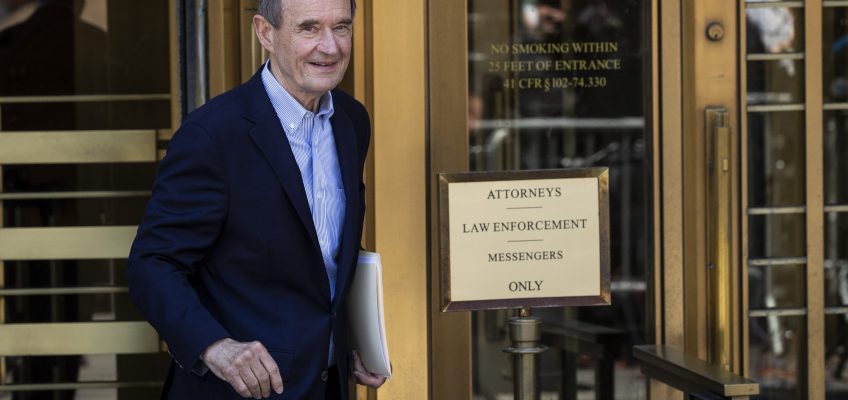Matthew Boyle | Bloomberg News (TNS)
Ellen Kessler was visiting her mother in Florida last year when things took a bad turn.
“She called me at 3 a.m. and was just hysterical, frightened that someone was in the house,” Kessler, who was staying at a hotel nearby, said. “I got there, and it was like she was not the same person. I didn’t know what to do.”
Concerned about leaving her then 91-year-old mother on her own, Kessler decided to bring her back with her to Maryland, which she said was “the worst mistake I ever made.” Being away from home exacerbated her mother’s anxiety and added a demanding burden to daily life for Kessler, a 60-year-old senior director at hotel chain Hilton Worldwide Holdings Inc.
Kessler’s bind has become increasingly common. More than half the U.S. labor force has caregiving responsibilities outside of work, and some 37 million Americans can spend an average of nearly four hours a day looking after an elder, according to U.S. government data. Workers who tend to aging parents and have children at home, the so-called sandwich generation, report even higher levels of emotional and financial strain, according to AARP.
Estimates of the economic cost of caregiving in the U.S. range from $264 billion to as much as $600 billion. “The impact is felt by a surprisingly large share of the population and it comes at an enormous cost,” according to a report from health insurer Blue Cross Blue Shield. Many people who are trying to balance their professional lives with caregiving are forced to miss work, take leave or quit their jobs.
One startup is trying new ways to help working caregivers carry the load. When Kessler explained her situation to her boss, she learned that Hilton had a new elder-care benefit managed by a startup called Wellthy. Other big companies, including electronics retailer Best Buy Co., tech bellwether Meta Platforms Inc. and mutual-fund giant Vanguard Group Inc., also offer Wellthy’s services to employees.
Just 12% of companies extend some form of elder-care support, according to Gallagher Surveys. Though a growing number of large employers offer workers paid caregiver leave, and many have referral or counseling services, hardly any offer tailored, expert advice on navigating the complex, acute challenges of caring for older family members. That means Wellthy has little direct competition.
That relative lack of elder-care options stands in contrast to the wider availability of child-care benefits, such as pretax set-asides for daycare expenses and emergency backup-care services.
Wellthy helps workers navigate the myriad issues that can arise when an older family member needs care. When Kessler reached out to Wellthy, they connected her with care consultant Lynda Cooke. Kessler’s mother has macular degeneration that impairs her vision, but she had resisted moving somewhere with full-time caregivers, so Cooke guided the family through finding a home health aide.
Then, a nighttime fall that resulted in a broken rib changed Kessler’s mother’s thinking about assisted living. “She said, ‘Ellen, I will not fight you anymore,’” Kessler recalled. Cooke was able to change course and provide Ellen with detailed questions to ask the facilities, guidance on negotiating fees and emotional support.
“Between the hospital, rehab and trying to work, it’s a lot,” Kessler said. “You really feel the wear and tear of being there for your parent.”
The employee-assistance programs (EAP) that many big companies offer typically can’t help employees navigate the labyrinthine maze of long-term care providers, regulations and payment options. Some employers offer services that steer employees to vendors, but shortages of home health aides and other workers in low-paid, high-turnover health-care roles can make actually getting help difficult.
“It’s a big, gaping hole,” said Boston Consulting Group managing director and partner Suchi Sastri, part of a team whose research estimated that the nation’s caregiver shortage, compounded with its aging population, will cost the U.S. $290 billion annually starting in 2030. “I don’t think it’s top of mind right now, but it has to be on the agenda of CEOs.”
Lindsay Jurist-Rosner co-founded Wellthy in 2014 after struggling to balance a demanding career in marketing with caring for her mother, who had multiple sclerosis and died in 2017. She started offering the concierge service to individuals but quickly expanded to focus on selling it to employers as a sponsored benefit, meaning it’s free for employees. Companies usually pay between $3 and $6 per employee per month. That gets them access to Wellthy’s network of care specialists — many of them experienced social workers — who are available around the clock.
“People come to us in crisis,” Jurist-Rosner said. “You have few moments in your life like this, so we have to deliver extraordinarily well.”
Christopher Cowan, the chief human resources officer at ChristianaCare, a Delaware-based health-care network that employs 13,700 people, gave Wellthy a shot last August. While Cowan said “it’s not cheap,” he said it will pay for itself if it helps him hold on to 11 nurses or three executives who might otherwise have left due to caregiving duties.
Harvard Business School professor Joseph Fuller, who has studied the effect of caregiving on the labor force and advised Jurist-Rosner when she was launching Wellthy, said those obligations are a primary driver of employee turnover. “It does not take much utilization to justify the coverage,” he said. In addition to elder care, Wellthy also provides help for young children, teens and the employees themselves.
Laura Fuentes, Hilton’s human-resources chief, said Wellthy saved its 49,000 U.S. employees 20,000 hours in less than a year, convincing her to expand it to the company’s UK and Ireland employees. Kamy Scarlett, Best Buy’s senior executive vice president of human resources, corporate affairs and Canada, said Wellthy has saved its 90,000 workers about 60,000 hours over the past two years, and has one of the highest satisfaction ratings of any of its employee benefits.
“I went through this years ago and if I had Wellthy then, I would have made different decisions,” Scarlett said.
For all Wellthy does — its specialists will also interview vendors on behalf of workers — it can’t offset the costs of care, which can be unpredictable and steep. Wellthy also can’t diagnose maladies or prescribe medications.
For workers who don’t have access to elder-care benefits, especially those who still have kids living with them, balancing work and family can feel overwhelming. Kelly Mann, 50, holds a high-ranking corporate job helping companies map out hybrid work. She has a teenage daughter with attention-deficit hyperactivity disorder, and aging parents facing serious health issues.
Her 79-year-old mother was recently rushed to the hospital with diverticulitis, and a follow-up MRI found a brain bleed, requiring a neurological consult. A stay in a rehab facility was initially rejected by her mother’s health-insurance provider, forcing Mann to spend five hours on the phone appealing the decision. Then, her mother had a stroke, putting her back in the hospital.
Around the same time, her father, 85, was diagnosed with midstage dementia, requiring a daytime home health aide. Mann’s husband, who works in residential real estate, helps out, but Mann says juggling everything is a burden.
“I have unlimited time off,” Mann said. “If you do not, you are screwed.”
©2023 Bloomberg L.P. Visit bloomberg.com. Distributed by Tribune Content Agency, LLC.




